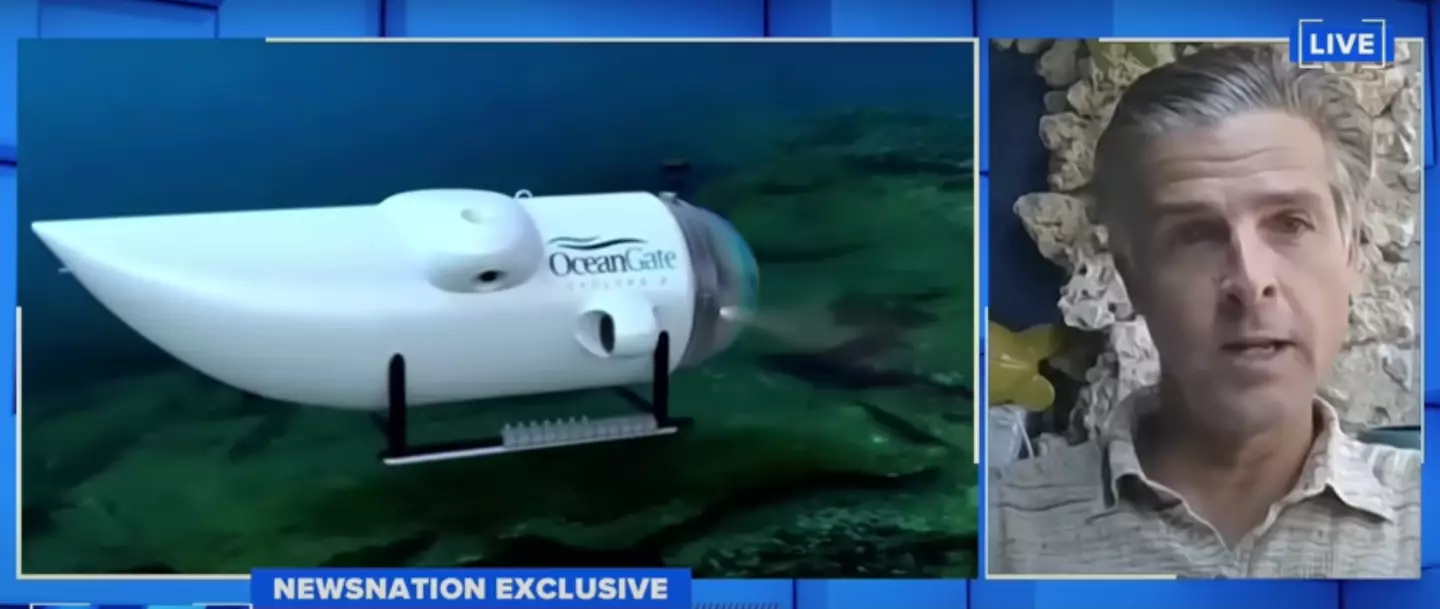As rumours swirl that the ‘catastrophic implosion’ aboard the missing Titan submersible could have been avoided, a sub expert and friend of OceanGate CEO Stockton Rush has spoken out about hearing 'cracking sounds' while inside the vessel on a 2019 dive.
The Titan sub, which had been set to travel over 12,000 ft down to the wreckage of the Titanic, went missing shortly after it set off on Sunday, 18 June, prompting a huge search and rescue mission.
Debris from the vessel was discovered Thursday (22 June) just 1,600 feet from the bow of the Titanic lying on the sea bed.
Advert
Speaking at a press conference on Thursday, Rear Admiral John Mauger confirmed that the tail cone of the missing Titan submersible had also been found close to the wreck of the Titanic.
He said: “In consultation with experts from within the unified command, the debris is consistent with the catastrophic loss of the pressure chamber.

"This is an incredibly unforgiving environment down there on the seafloor and the debris is consistent with a catastrophic implosion of the vessel."
It has since emerged that this hasn't been the first time issues have arisen with OceanGate vessels.
Advert
Karl Stanley, the owner of Stanley Submarines, explained in an email obtained by The New York Times that during his 2019 trip with OceanGate, a loud cracking sound was heard, which signalled there was 'an area of the hull that is breaking down'.
He decided he wanted to go down in the Titan sub and did a week of 'free labour' to pay for his extortionately-priced seat.
It was the second deep dive in the Bahamas after Rush did the first expedition in the Titan solo, and Stanley recalled how he heard the five-inch thick carbon fibre that made up the vessel 'make cracking sounds'.
Rush had allegedly warned the passengers, including Stanley, on the second voyage to be prepared for that.
Speaking more recently to NewsNation, Stanley recalled Rush letting him drive the vessel, saying: "He wanted me to feel in control of my own destiny... he knew that there was risk involved at this stage."
Advert

Stanley also described being able to navigate to deeper water 'by the sound of the cracking getting louder'.
"Imagine a piece of wood breaking if you do it very slowly and controllably you're going to hear a lot of cracking before the beam just completely breaks."
Stanley explained how he urged Rush to take his time with the development and make sure that the sub was safe and dive-worthy.
In the email obtained by the NY Times, he pleaded with Rush to slow his Titanic plans which were ultimately doomed, writing: "A useful thought exercise here would be to imagine the removal of the variables of the investors, the eager mission scientists, your team hungry for success, the press releases already announcing this summer's dive schedule.
Advert
"Imagine this project was self funded and on your own schedule. Would you consider taking dozens of other people to the Titanic before you truly knew the source of those sounds??"
Rush never replied to the email.

Rush been promoting Titanic tourist tours since 2017 and had already collected fees from passengers hoping to dive and see the ill-fated ship, which sank in 1912 after striking an iceberg.
Having met the man behind the exploration ten years ago, Stanley admitted: "I was excited about it and I believed in his mission."
Advert
Stanley claims that Rush knew the risks and did 'real time monitoring' in an attempt to mitigate the risk and believed he knew when the hull would be 'approaching failure'.
The five people on board were British billionaire Hamish Harding, French maritime expert Paul-Henri Nargeolet, Shahzada Dawood and his son Sulaiman, and OceanGate CEO Rush - all of who are believed to have not survived the assumed implosion.
Topics: Titanic, News, US News, World News
